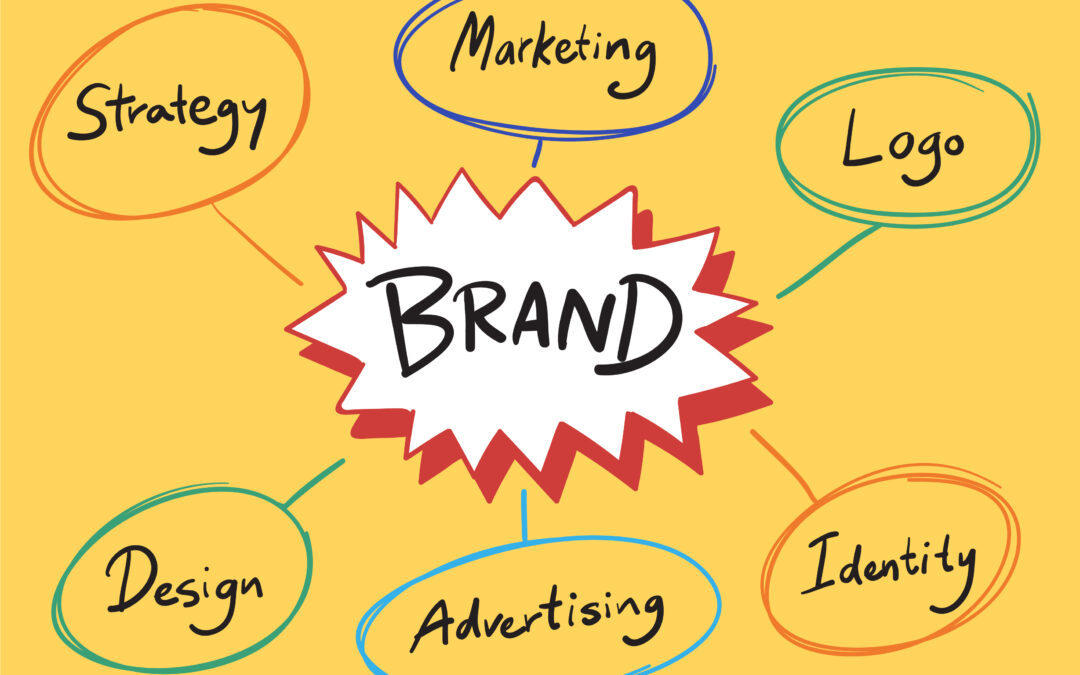What is branding : Welcome to our blog post on branding! Have you ever wondered what makes a particular brand stand out from the rest? Why do some brands have a strong connection with their customers while others struggle to make an impact? In today’s highly competitive market, branding has become more important than ever before. It can be the difference between success and failure for businesses of all sizes. So, if you want to learn about the basics of branding and why it matters, keep reading!
1. Introduction to Branding
In its simplest form, branding is the process of creating and maintaining a unique identity for a product, service, or company. It’s about differentiating your offering from that of your competitors and making it more attractive to your target market.
A strong brand can build customer loyalty, drive sales, and even help you charge more for your products or services. That’s because customers who are familiar with and engaged with a brand are more likely to make purchases – and they’re also more likely to be willing to pay premium prices.

Branding isn’t just about creating a name or logo, though those are important elements of any brand. It’s also about developing a clear and consistent message that resonates with your target audience. Your brand should reflect your company’s values and mission, and it should be conveyed across all of your marketing materials, from your website to your social media posts to the way you answer the phone.
Creating a strong brand can be a challenge, but it’s worth the effort. A well-crafted brand can give you a major competitive advantage in any market.
2. What is Branding and What Does it Mean in Marketing?
In marketing, branding is the use of a name, term, design, symbol, or other feature to identify a product or service and distinguish it from those of other producers. Branding can be applied to the entire corporate identity as well as to individual product and service names. A brand represents a promise to the customer, conveying the idea that the company behind the brand can be trusted to consistently provide quality products or services. Good branding raises the profile of a company and its products or services, differentiating them from competitors. It also creates loyalty among customers and employees, generates new business opportunities, and provides protection against imitators.
There are many ways to create a brand. The most important factor is consistency; all communications should reinforce the message that the brand represents. A strong brand conveys a clear message about what a company or product does, why it is better than others in its category, and what benefits it offers customers.
An effective brand strategy gives you a major edge in increasingly competitive markets. But what exactly does ‘branding’ mean? How important is it? And how do you go about doing it the right way? Let’s take a look at these questions and more in this article on branding basics.
3. Examples of Different Types of Branding
There are many different types of branding, each with its own advantages and disadvantages. Here are some examples of different types of branding:
1. Product branding is when a brand is associated with a specific product. This can be done through marketing and advertising the product under the brand name. Product branding can create strong customer loyalty and increase brand awareness. However, it can also be costly to establish and maintain a product brand.
2. Corporate branding is when a brand represents an entire company or organization. This type of branding can help build trust and credibility with customers and stakeholders. It can also make it easier to launch new products or enter new markets. However, corporate branding can be difficult to change once it is established.
3. Personal branding is when an individual promotes themselves as a brand. This can be done through social media, personal websites, and other channels. Personal branding can be beneficial for building a reputation and gaining exposure. However, it takes significant effort to maintain a strong personal brand over time.
4. Benefits of Investing in Branding
There are many benefits to investing in branding, including building customer loyalty, improving customer recognition, and differentiating your company from the competition. Building customer loyalty is one of the most important benefits of branding because it can lead to repeat customers and positive word-of-mouth. Improving customer recognition is also important because it can help customers remember your company when they need your product or services. Differentiating your company from the competition is another benefit of branding because it can help you stand out in a crowded market.
Investing in branding can also help you attract new customers and grow your business. Branding can make your company more visible to potential customers, and it can also give you a competitive advantage when competing for business. In addition, branding can help you build trust with potential customers, which can lead to more sales and higher profits.
5. How to Create an Effective Brand Strategy
If you want to create a successful brand, you need to have a solid brand strategy in place. Here are some tips to help you create an effective brand strategy:
1. Figure out what makes your brand unique. What are your core values and strengths? What can you offer that no one else can? Once you know what sets your brand apart, you can start to build a strong identity around it.
2. Know your target audience. Who are you trying to reach with your branding? What do they care about? What needs do they have that your brand can fill? When you understand your target audience, you can better craft messaging and visuals that will resonate with them.
3. Keep it consistent. Consistency is key when it comes to branding. Make sure all of your marketing materials, from your website to your social media posts, reflect your core values and message. This will help people recognize and remember your brand more easily.
4. Be willing to evolve. As the world changes, so should your brand. Don’t be afraid to experiment with new ways of reaching your audience or communicating your message. Just make sure that any changes still align with your overall brand strategy.
6. Understanding the Difference Between Branding and Marketing
Branding and marketing are often used interchangeably, but they are two very different things. Branding is the process of creating a unique identity for a company or product, while marketing is the process of promoting that identity to customers.
Think of branding as the foundation upon which you build your marketing efforts. Your brand is your promise to your customer. It’s what sets you apart from your competition and tells your customers what they can expect from you. Your marketing efforts should be designed to reinforce your brand and keep it front and center in the minds of your target audience.
While branding is about creating an identity, marketing is about promoting that identity to reach customers and achieve business goals. Marketing encompasses everything from advertising and public relations to sales and customer service. It’s all about getting people interested in what you have to offer and then convincing them to buy it.
The most successful companies understand the importance of both branding and marketing, and they invest heavily in both areas. They know that their brand is the foundation upon which their entire business rests, and they use marketing to build awareness and drive sales.
7. Building Your Own Brand Kit
When it comes to branding, your visual identity is key. Creating a strong and consistent visual identity across all of your marketing materials will help customers to recognize and remember your brand. That’s why it’s important to have a “brand kit” with all of the elements you need to maintain a cohesive visual identity.
Building your own brand kit is not as difficult as it may seem. Start by gathering all of the visuals you currently use for your business, including your logo, color palette, fonts, and any other images or graphics. Once you have all of these elements in one place, you can begin to create a system for using them consistently across all of your marketing materials.
Here are a few tips for building your own brand kit:
– Choose a limited color palette and stick to it. Two or three colors is usually plenty.
– Use the same fonts for all of your headings and subheadings. This will help create a cohesive look throughout your materials.
– Make sure your logo is included in every piece of marketing collateral. Whether it’s on the front page of your website or printed on business cards, customers should be able to easily spot your logo.
– Use consistent imagery across all platforms. If you use photos on your website, make sure they complement the visuals on your social media channels.
By following these tips, you can create a strong and recognizable visual
Also Read: Marketing Materials for Small Business 20 Essential tools.
Conclusion
Branding is essential for any business, large or small. By understanding the basics of branding and its importance, you can effectively create a unique identity that will help differentiate your company from others in the market. With a clearly defined brand strategy and message, your business can become more recognizable and appealing to potential customers. Ultimately, effective branding is what sets successful companies apart from their competition.

